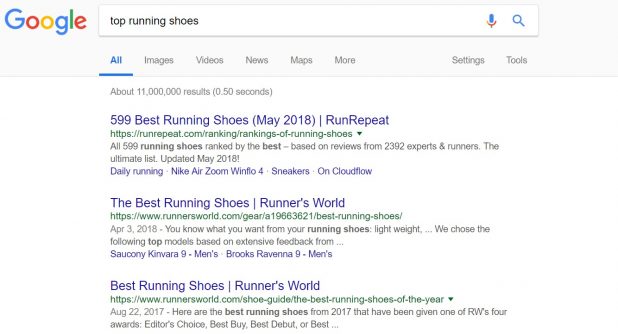Irrespective of what your content marketing strategy is, it will always start with keyword research. When done properly, keyword research relies heavily on user intent and is insolubly related to your business goals.
Do these words seem too “big”?
They shouldn’t.
If your keyword research isn’t done to support your business goals, then all your content marketing efforts are in vain. Similarly, if your keywords are disconnected from user intent, the traffic you will get becomes irrelevant.
The Google algorithm changes in the past few years have triggered new ways to do market research. Want your coffee shop to rank higher? How you optimize depends a lot on your location. Want your SaaS solution to steal the thunder from your competitors? You need to know a lot about your buyer persona and optimize your content according to user intent.
Let’s take a look at the keyword research trends that shape SEO writing today and have the power to fuel a ROI-oriented content strategy.
1. Get real insights
Never before did we have access to so many amazing research tools. We no longer have to guess which keywords are suitable for our brand or which keywords we have a chance to rank for.
In the “olden” days, things were based on trial and error. Write 20 articles on “best running shoes”. Are we ranking in the top 10 positions yet? No? Then write 20 more keyword-stuffed articles. Rinse and repeat until we rank (and we fill the internet with junk content in the process).
The top keyword research tools (SEMrush, Ahrefs and the Moz suite) all rank keywords based on how hard it is to rank for. Couple this with your domain authority and that of the competitor to beat and you know if you’ve got a fighting chance.
Sure, no result is definitive. SEO is not set-and-forget. In between researching your keywords and actually publishing your content, you may find that the game has changed and you need more “juice” to beat the top ranking websites. But you have a pretty solid starting point.
2. No more focus on search volume
Finding the right niche within your niche is the right way to go.
Sounds cryptic?
Let me illustrate with an example from my own backyard. I run a digital marketing agency that gets 90% of its clients through content. The other 10% come from referrals. We are our own success story, if you will.
All that, despite not having a huge amount of traffic. When I first started blogging for Idunn, I set myself the impossible task of ranking for keywords like “copywriting” or “content writing”. While we still don’t rank within the top 10 positions for those keywords, we do pretty well.
But it’s irrelevant.
This is why I stopped aiming for those keywords. [I wrote a detailed blog post about changing our SEO strategy – have a look if you want the full scoop.]
We got no leads from those generic keywords, despite their huge search volume. People searching for “copywriting” or “content writer” were more interested in definitions.
When we started to optimize for low-volume, long-tail keywords, though, things changed completely. “What to ask a marketing expert”, “hire a social media expert” or “hire SEO copywriters” brought in qualified leads that were easy to turn into customers.
3. Optimize for concepts, not keyword strings
A few years ago, you needed a different content asset for every variation of your keyword. Wanted to rank for “best running shoes” AND “top running shoes”? Well, you needed two landing pages or two different articles.
Search engines have gotten smarter. You may not rank in exactly the same position for two very similar queries, but you’ll definitely be in the neighborhood.
Runrepeat.com ranks first and then third, for example. Both are honorable positions to say the least.
So, instead of optimizing for specific keywords, you need to optimize for concepts. Again, we circle back to user intent. What does the user want to find out or buy? Answer that question as precise and as detailed as possible and your ranking will soar.
Conclusion
Instead of dreading algorithm changes of search engines, let’s take a look at the bright side. I think we can all agree that the internet is a better, cleaner place than it was 10 years ago.
Remember when you were searching for historic facts or the latest news and all you got were keyword-stuffed articles that were blatantly incorrect, outdated and barely readable? Luckily, that’s a thing of the past.
Today’s top results are (for the better part – no algorithm is perfect) made up of great content that truly answers your questions and matches your query. If you can create that type of content, both Google and your readers will love you.
And if you need help with content writing or copywriting my team of writers at Idunn is happy to lend a knowledgeable hand. Take a look at our services and let’s talk about how we can boost your content marketing and SEO game.







